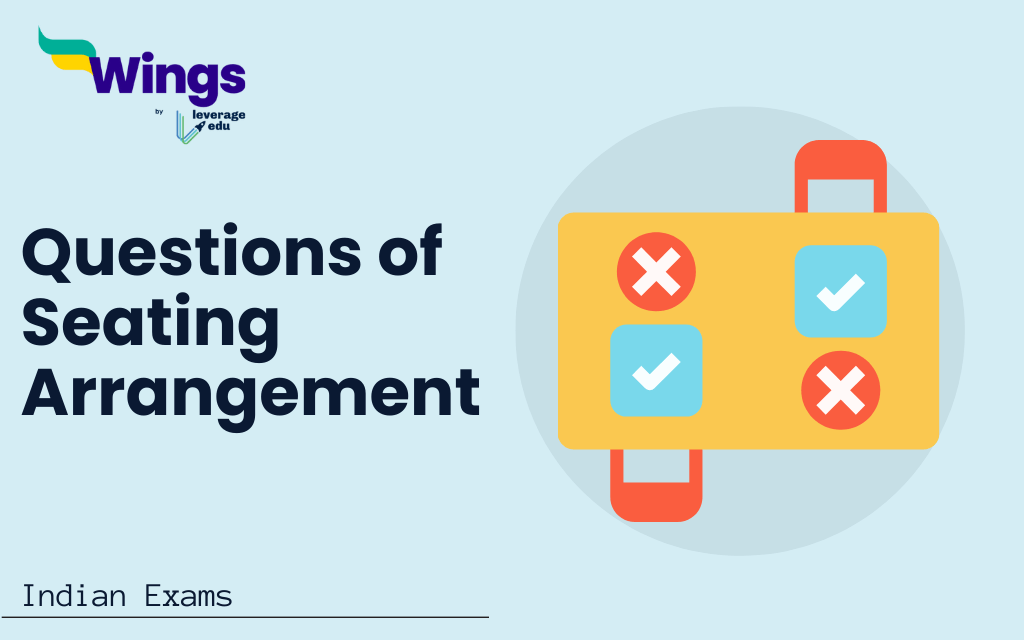Seating Arrangement Reasoning questions are an important part of the quantitative aptitude section. These problems test candidates’ logical and analytical skills. To excel, it’s important to grasp the basics first, understand past exam patterns, and adopt a systematic approach.
Seating Arrangement Reasoning Problems are asked in exams like CAT, GATE, UPSC, and more. Start your preparation by solving these questions. In this blog, we will go over the fundamentals of Seating Arrangement Reasoning problems, as well as the types of questions asked in previous year exams and how to approach them. This will help you clear your basics and answer these Seating Arrangement Reasoning questions.
Contents
What are Seating Arrangement Reasoning Problems?
Seating arrangement problems is divided into four main types: Linear, Double Row, Circular, and Rectangular arrangements.The direction individuals face, whether North, South, towards the center, or away, significantly influences the arrangement’s solution.Understanding directional concepts is very important. In Linear arrangements, right and left are determined by facing North or South, while in Circular and Rectangular setups, it depends on facing towards or away from the center.
Must Read: 20 + Height and Distance Questions and Answers
20 + Seating Arrangement Reasoning Questions and Answers
These questions typically consist of multiple parts, and if the candidate is able to solve the seating arrangement questions, they can easily receive high marks.
The sample seating arrangement questions and their answers are provided further below. To improve their accuracy and response time, candidates must work through these problems and practice them frequently.
Tips to Solve Seating Arrangement Reasoning Questions
Here we have mentioned some of the tips to consider while solving Seating Arrangement Reasoning Questions:
- Start with Direct Information: Initiate problem-solving by utilizing explicit details provided in the question, forming the foundation for subsequent steps.
- Visualize the Arrangement: Create a mental or written representation of the seating arrangement to enhance understanding of relationships and individual positions.
- Consider Indirect Connections: Analyze implicit connections or relationships between individuals based on indirect information, extracting valuable insights beyond explicit clues.
- Account for Facing Directions: Pay close attention to the direction individuals face, a critical factor influencing relative positions and contributing to accurate arrangement.
- Eliminate Possibilities: Systematically rule out invalid possibilities as you progress, narrowing down options and facilitating a more focused and efficient problem-solving process.
Also Read: 20 + Height and Distance Questions and Answers
FAQs
The seating arrangement is the logical arrangement of either objects or people in a logical manner. One has to either perform the arrangement to answer the questions or decode the predefined arrangement by applying the logical analysis.
Seating arrangement questions come in various types, including Linear Arrangement , Circular Arrangement, Rectangular Arrangement, and Double Row Arrangement .
Consider a linear seating arrangement of A, B, C, D, E facing North. If the clue states that B is third to the right of D, and F is between A and E, the arrangement becomes a puzzle to solve, deducing the positions of individuals.
RELATED POSTS
This was all about the “20 + Seating Arrangement Reasoning Questions and Answers”. For more such informative blogs, check out our Study Material Section, or you can learn more about us by visiting our Indian exams page.
 One app for all your study abroad needs
One app for all your study abroad needs














